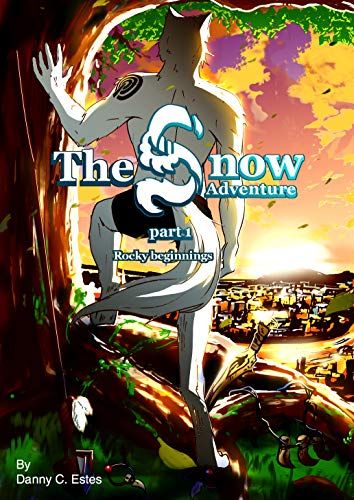Review by Domus Voci
In the urban fantasy world of Burrland, an arctic wolf named Byrghir Snow is driven from his tribal clan as a pariah, mostly due to his discomfort towards consuming intelligent life that is hunted by other members. In the futuristic modern civilization of Burrland, where anthropomorphic animals populate the continent, this form of cannibalism is seen as taboo and criminal, which unfortunately means Snow is judged solely on his appearance once he travels to the nearest city, Furlton. Trying to make it on his own there, he is met with hostility by the locals. Particularly after rescuing a middle-aged feline (?) named Willie Levy from a seemingly random mugging. Unbeknownst to either of them though, larger forces are at play, and a friend of Willie’s has darker motives.
Ignoring some noticeable grammatical hiccups that can be frequently found in the dialogue, I want to do more than find this okay. For a two-part chapter like “Rocky Beginnings”, the comic has room to grow, but the most divisive aspect with the comic is the plot structuring.
The comic begins with a text prologue describing Snow’s backstory, but I feel conflicted on whether or not it is pointless. On the plus side, it does mention worldbuilding elements which explain things you immediately need to know, as well as give us a sense as to why the citizens of Furlton are so hostile towards clan wolves.
On the minus side, some elements of the text prologue could have delved furthermore into things that don’t add up throughout the worldbuilding. For example, it didn’t even occur to me the setting took place thousands of years into the future until I did research on other chapter of “The Snow Adventure”.
The reason this is all brought up is because the purpose of a prologue is to not only catch a reader’s attention in a way that a first chapter cannot, but to provide some tidbits of the plot or setting in a way that cannot naturally be incorporated into the narrative. Whether it’s in the form of a novel or a comic book, a good prologue allows a reader to get a taste of what is to come if they keep turning the page. A bad prologue only provides exposition upon exposition, sometimes repeating information the reader will either figure out for themselves. In the case of “Rocky Beginnings”, it is established in the narrative/dialogue that Snow is a stoic yet shy loner, and that clan wolves are considered dangerous outsiders within the city of Furlton. In the narrative though, it isn’t established how much Snow detests the thought of eating—or cannibalizing, in this case—another intelligent life, as opposed to the other members of his former clan.
In my opinion, and this is just a suggestion, the best kind of text prologue for a comic like The Snow Adventure would’ve been to have it be from the personal perspective of Snow himself. Maybe he is writing it in a journal or diary, and the entry gives the reader a further sense into his revulsion towards cannibalism?
This is not to say I didn’t enjoy the story, or that I wasn’t invested. The characters kept me engaged, particularly Snow’s non-conformity both in the eyes of his former clan and the urban environment he fled to. Willie as a character, though bland at times, does make me feel there is further potential to explore after Part 2. There are also moments where the character is allowed to either breathe or let a moment sink in, as opposed to pushing out more plot exposition or having every page be about action.
The story concept, plot, and editing were done by Danny Carl Estes while the art cover, panel design, and artwork were done by Guhweto. For the most part, Guhweto manages to bring Estes’ story and characters to life on the page. And I must say that the artwork translates well into the story while conveying each scene. Granted, sometimes the designs of the characters can be inconsistent with the narrative (it is plausible for the muscular and steely-eyed Snow to be older than fifteen years, but Willie is said to be middle-aged, yet the feline looks around the same age as the former), but where Guhweto succeeds is in atmosphere and action. The warehouse scene in Part 2 was surprisingly smooth, fast-paced and visually engaging with nail-biting cliffhangers.
At the end of the day, “The Snow Adventure: Ricky Beginnings Part 1 and Part 2” are okay. The potential for some good stories is sometimes undercut by the lack of visual storytelling, but it manages to capture the readers attention. With a dynamic main character and an intriguing world to explore, “Rocky Beginnings Part 1 and Part 2” might be up a furry comic book reader’s alley. Wherever the story goes, I have a feeling it will be a fun ride.
